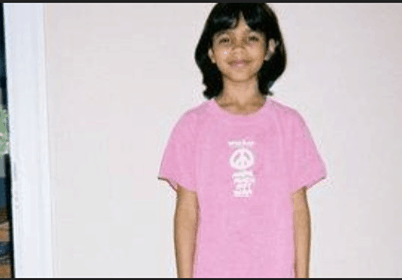Gov. Kate Brown declares ‘crisis’ at her child welfare agency, says she’ll personally step in to make fixes
In Douglas County, a wing of the county juvenile detention center has been repurposed as a program for teenagers in foster care. (Photo by Hillary Borrud/ The Oregonian.) Hillary Borrud | The Oregonian/OregonLive
SALEM — Gov. Kate Brown issued an executive order Thursday morning laying out a path for her to take a direct role in day-to-day operations at the state’s embattled child welfare program.
Under the executive order, Brown will lead a new oversight board that will meet at least every other week to decide what the child welfare agency should do. And she will install an on-site crisis management team to ensure Department of Human Services Director Fariborz Pakseresht and Child Welfare Director Marilyn Jones implement the panel’s recommendations. Brown will also embed one of her senior advisers at the child welfare agency to oversee the work, her order says.
“I’m hoping with this level of oversight we can continue to make progress and ensure our children are safe,” Brown said.
The governor announced the strategy two days after a national child advocacy group filed a federal lawsuit on behalf of 10 children in Oregon foster care and a week after lawmakers questioned the state’s decision to send one of those children – a 9-year-old girl – to a facility in Montana that used physical restraints and Benadryl injections to control her.
In recent months, news reports have revealed Oregon child welfare leaders have increasingly housed foster children in institutions, including sending them to out-of-state programs accused of abuse and placing them at residential programs in converted juvenile jails. A legislative hearing on child welfare officials’ use of foster programs in converted juvenile jails is scheduled for Thursday.


Oregon sends hundreds of foster kids to former jails, institutions, not families
Dawn Post, deputy director of the group A Better Childhood which filed the federal lawsuit along with Disability Rights Oregon, acknowledged the governor’s action in a message on social media Thursday. “We are pleased that the state appears to be beginning to treat the care system as being in the crisis it is and we look forward to keeping the pressure on the state to ensure that the state, through whatever means, finally stops hurting children,” Post wrote on Twitter. At the same time, Oregon House Republicans said in a press release that Brown had more than enough time to identify problems and start implementing changes in the state’s child welfare program. “Another board won’t do,” they wrote in a press release.
Under Pakseresht, the agency has ignored reporting deadlines spelled out in state law and failed to disclose the deaths of several children killed after the case workers received or investigated reports or abuse, as The Oregonian/OregonLive first reported in November.
A proposal now working its way through the statehouse seeks to impose stricter rules on when and how the agency must disclose those deaths.
Buried: The state hides how children die on Oregon’s watch
The agency has also failed to accurately communicate and, Brown’s order says, to comply with the state’s public records laws. In response to questions about specific cases, the agency gave false information to The Oregonian/OregonLive in December. Its statements asserted the agency had no responsibility to publicly disclose any missteps that may have proceeded the deaths of two children, including the shooting death of a foster child in her foster home by another foster child.
In March, accurate information about the agency’s responsibility to investigate and report on the deaths became public after The Oregonian/OregonLive received public documents that contradicted what the agency said months earlier. Agency officials then acknowledged they had given out false information.


State hides from public more deaths of children on its watch as lawmakers plan reforms
The governor’s recommendation for a crisis management team is reminiscent of an idea pitched by her Republican opponent in the 2018 election, then-Rep. Knute Buehler. In February 2018, Buehler called for the Legislature to appropriate an additional $50 million to address child welfare problems and bring in a “rapid improvement team.” At Brown’s request, the Legislature boosted child welfare spending by $14.5 million but no crisis management team was hired.
The executive order highlights the importance of child welfare leaders complying with Oregon public records law and the statutory mandate to review all abuse and neglect deaths of children in state care or who were on child protective services’ radar.
Brown’s administration has already taken a hands-on approach to the handling of public records and information releases at the Department of Human Services.
In 2018, the governor’s spokespeople routinely made the final call on whether the child welfare program should release even basic information such as the number of children in the system. Brown said her communication staff’s micromanagement of DHS information releases was intended to ensure the agency responded “expeditiously” on public records and information requests. Correspondence between the governor’s team and child welfare officials, obtained by The Oregonian/OregonLive, showed no evidence to support the claim this sped up responses.
On Thursday, Brown said she recently grew concerned “about information coming to my office, frankly, and to the public, making sure that information (on child welfare) was accurate about both individual cases and systems issues.”
Brown has been working to fix deep-seated problems in the state’s foster care system since she took office in 2015, but the lawsuit and latest revelations about the state’s questionable decisions suggest her attempts at reform have not stuck.
In a statement Thursday, Brown said, “Oregon’s child welfare system is overburdened to the point where I have serious concerns about the state’s ability to sufficiently serve our most vulnerable children. While DHS is working on long-term solutions to right-size the foster care system, there needs to be immediate action to protect children in care today. That’s why today I am … bringing in additional resources and expertise.”
In recent years Brown has:
· Commissioned an independent report, delivered in 2016 on the problems and solutions underlying Oregon’s foster crisis
· Appointed an advisory committee to oversee that report
· Required the Department of Human Services to submit monthly updates to her
· Hand-picked two different men to lead the Department of Human Services, one of whom — Clyde Saiki — retired less than two years into the job.
Brown notes in the order that the agency’s strict compliance with certain rules and practices is hindering its ability to hire and procure services necessary to make improvements in a timely manner, and she says the foster care crisis justifies bypassing some of those regulations. The executive order currently is set to remain in place for six months but Brown could extend it further.
Reporter Molly Young contributed to this article.


